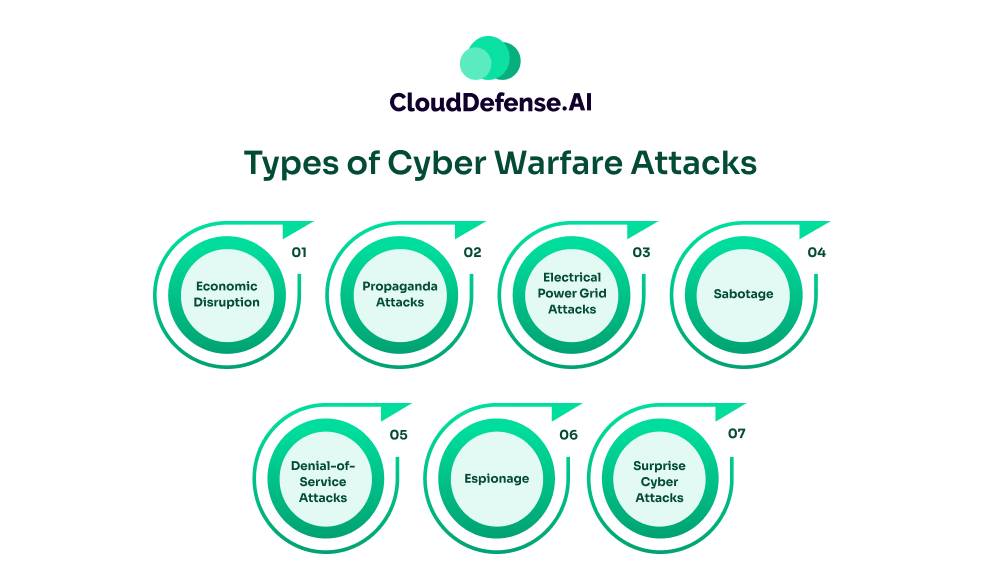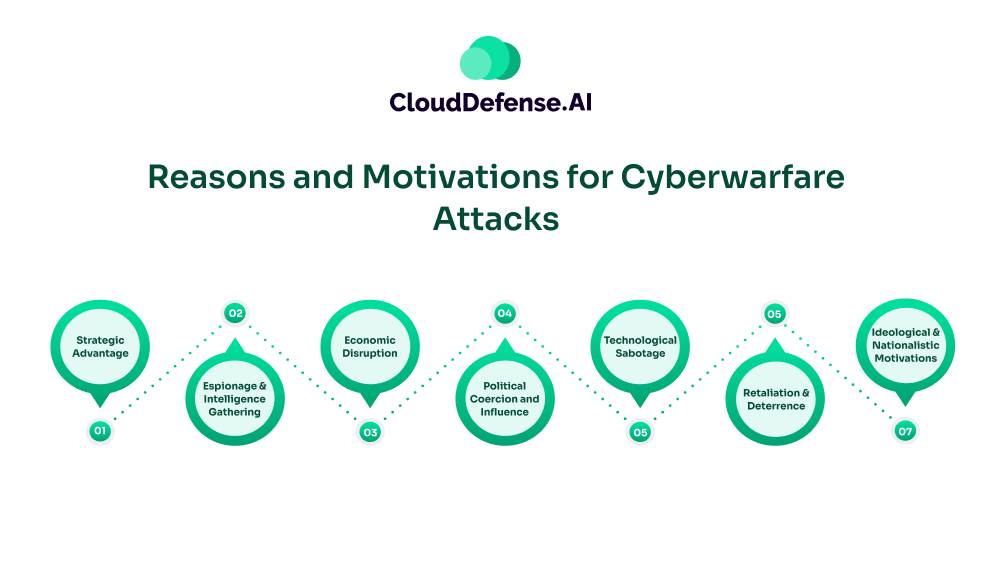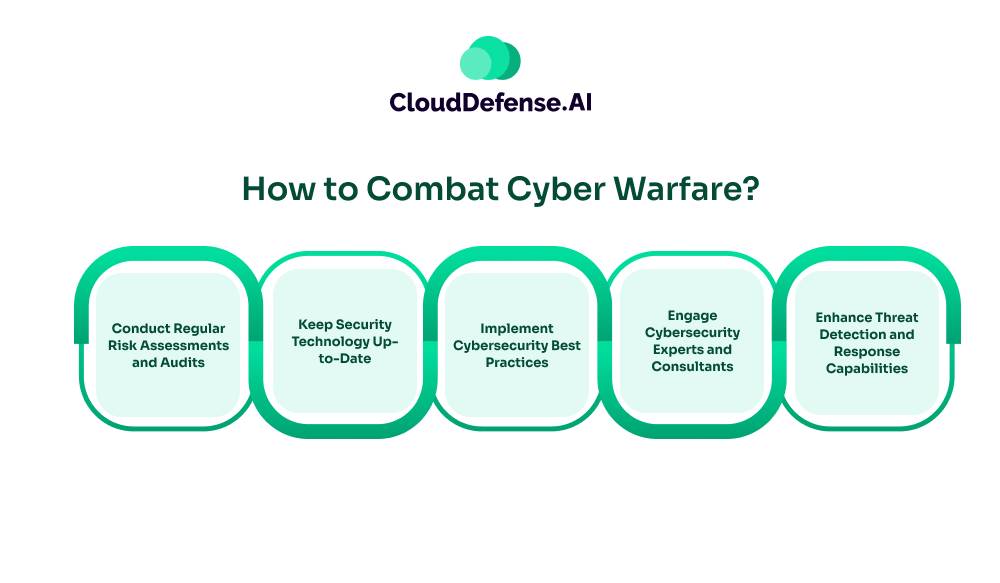What Is Cyber Warfare?
Cyber warfare represents a form of conflict where nation-states, terrorist organizations, or non-state actors launch cyber attacks aimed at another country with the intention of causing significant harm. These attacks can target government and civilian infrastructure, disrupt critical systems, and potentially result in the loss of life, marking a new dimension in the landscape of international conflict.
Unlike traditional warfare, which involves physical combat and conventional weaponry, cyber warfare utilizes the internet and digital technologies as its battleground. The primary objective is to disrupt, damage, or destroy a nation’s infrastructure through various means such as computer viruses, denial-of-service attacks, and other malicious activities designed to cripple vital computer systems.
What Does Cyberwarfare Look Like?
Cyberwarfare manifests in various forms, all aimed at destabilizing or destroying critical systems to weaken the target country. These attacks can be directed at financial infrastructure, disrupting banking and financial transactions to create economic chaos.
Public infrastructure, such as dams or electrical grids, may be targeted to cause widespread outages and physical damage. Safety infrastructure, including traffic signals and early warning systems, can be compromised to endanger public safety and create havoc.
Additionally, cyber attacks against military resources or organizations seek to undermine a nation’s defense capabilities, potentially crippling its ability to respond to threats. Each of these actions, whether alone or in combination, aims to destabilize the core systems that a nation relies on for stability and security.
Types of Cyber Warfare Attacks

Cyber warfare encompasses a range of attack strategies designed to destabilize or cripple a target nation’s critical infrastructure and operations. Here are the main types of cyber warfare attacks:
1. Economic Disruption
Modern economies rely heavily on computer systems for their operations. Cyber attacks targeting financial networks, stock markets, payment systems, and banks can disrupt economic activities by stealing funds or blocking access to essential financial resources. Such attacks can have far-reaching effects, crippling economic stability and causing widespread panic.
2. Propaganda Attacks
Propaganda attacks aim to influence the beliefs and morale of a target population. These attacks can spread misinformation, expose embarrassing secrets, or fabricate lies to erode public trust in the government. By manipulating public opinion, attackers can create internal strife, lower morale, and potentially turn citizens against their own country.
3. Electrical Power Grid Attacks
Targeting the electrical power grid can have catastrophic consequences. Disabling the power grid not only disrupts essential services but can also lead to significant physical damage and loss of life. Such attacks can paralyze communication networks, making it difficult for people to send messages or make calls, and can halt critical infrastructure, causing widespread chaos.
4. Sabotage
Sabotage involves the intentional disruption or destruction of sensitive information and systems. Attackers may leverage insider threats, such as disgruntled employees or those with affiliations to hostile nations, to steal or destroy data. This can weaken a nation’s defenses and give adversaries a strategic advantage.
5. Denial-of-Service Attacks
Denial-of-service attacks overwhelm websites with fake traffic, making them inaccessible to legitimate users. By targeting websites critical to citizens, the military, or researchers, attackers can disrupt essential operations and communication. This type of attack can halt vital services and create confusion and inefficiency.
6. Espionage
Cyber espionage entails spying on another country to obtain confidential information. Techniques like spear-phishing or deploying botnets allow attackers to infiltrate computer systems and extract sensitive data. This stolen information can be used for strategic advantages, influencing geopolitical dynamics.
7. Surprise Cyber Attacks
Surprise cyber attacks are large-scale, unexpected strikes designed to catch the enemy off guard. Comparable to historical events like Pearl Harbor, these attacks aim to weaken a nation’s defenses swiftly and decisively. They often serve as a precursor to physical attacks in hybrid warfare, destabilizing the target country and paving the way for further aggression.
Examples of Cyber Warfare Operations
Here are some examples of cyber warfare to give you a better understanding
1. Fancy Bear Attack on Ukrainian Artillery
Between 2014 and 2016, the Russian cybercrime group known as Fancy Bear launched a highly effective cyber attack against Ukrainian military forces. The operation targeted the D-30 Howitzer artillery unit by spreading malware through an infected Android application used for managing targeting data.
This application, widely adopted by Ukrainian officers, contained the X-Agent spyware, which enabled the attackers to gather critical military information. The impact was devastating, resulting in the destruction of over 80% of Ukraine’s D-30 Howitzers, significantly weakening the country’s artillery capabilities.
2. Stuxnet Virus
The Stuxnet virus represents one of the most sophisticated and impactful cyber attacks in history, targeting Iran’s nuclear program. This malicious worm was introduced via infected USB devices and specifically aimed at supervisory control and data acquisition systems.
By infiltrating these systems, Stuxnet caused significant physical damage to Iran’s nuclear centrifuges, thereby crippling the nation’s ability to produce nuclear weapons. The attack is widely believed to have been a joint effort by the United States and Israel, demonstrating the potent capabilities of cyber warfare in achieving strategic geopolitical goals.
3. Sony Pictures Hack
In response to the release of the film “The Interview,” which depicted a negative portrayal of North Korean leader Kim Jong Un, Sony Pictures suffered a major cyber attack. Attributed to North Korean government hackers, the breach involved the theft and subsequent release of sensitive company data, including unreleased films and confidential employee information.
The FBI identified distinct similarities between this attack and previous North Korean malware operations, such as shared code and encryption algorithms. This incident highlighted the growing threat of state-sponsored cyber attacks aimed at coercing and punishing entities that challenge authoritarian regimes.
Reasons and Motivations for Cyberwarfare

A variety of strategic, political, and economic motivations drive cyber warfare. The reasons behind these attacks often reflect the aggressor’s broader goals and can be categorized into several key areas:
1. Strategic Advantage
One of the primary motivations for cyber warfare is to gain a strategic advantage over adversaries. By disrupting critical infrastructure, such as communication networks, power grids, and military systems, a nation can weaken its opponent’s defensive and offensive capabilities. This can be especially crucial during times of heightened geopolitical tension or conflict, where digital sabotage can tilt the balance of power without the need for direct military engagement.
2. Espionage and Intelligence Gathering
Cyber warfare offers a covert means to conduct espionage and gather intelligence. Nations may seek to infiltrate sensitive computer systems to steal classified information, such as military plans, technological advancements, or diplomatic communications. This intelligence can provide invaluable insights into an adversary’s capabilities, intentions, and vulnerabilities, enabling more informed decision-making and strategic planning.
3. Economic Disruption
Economic motivations play a significant role in cyber warfare. Attacks targeting financial institutions, stock markets, and critical economic infrastructure can destabilize a nation’s economy, leading to financial chaos and undermining public confidence. By crippling economic systems, attackers can exert pressure on governments, disrupt trade, and weaken a nation’s ability to sustain prolonged conflict.
4. Political Coercion and Influence
Cyber warfare is also used as a tool for political coercion and influence. State-sponsored hackers may launch attacks to intimidate or punish entities that oppose their policies or challenge their authority. This can include targeting media organizations, dissidents, or foreign governments. By spreading propaganda, leaking sensitive information, or disrupting critical services, attackers can manipulate public opinion, incite unrest, and undermine political stability.
5. Technological Sabotage
Technological sabotage is another motivation behind cyber warfare. Nations may seek to hinder their adversaries’ technological development by infiltrating and disrupting research facilities, industrial plants, or scientific institutions. This can delay or derail critical projects, giving the attacker a competitive edge in areas such as defense technology, space exploration, or advanced manufacturing.
6. Retaliation and Deterrence
Cyber warfare can serve as a means of retaliation and deterrence. In response to perceived threats or hostile actions, nations may launch cyber attacks to signal their capabilities and resolve. By demonstrating the potential for significant digital disruption, they can deter adversaries from engaging in further hostile activities. This form of cyber posturing can be a crucial component of modern deterrence strategies, complementing traditional military and diplomatic efforts.
7. Ideological and Nationalistic Motivations
Ideological and nationalistic motivations often underpin cyber warfare actions. Hackers motivated by patriotic fervor or ideological beliefs may target entities they perceive as threats to their nation or values. This can include cyber attacks against foreign governments, corporations, or individuals deemed hostile to their cause. Such motivations can drive state-sponsored actors as well as independent hacktivist groups, adding a complex layer to the cyber threat landscape.
Cyberwarfare vs. Cyber War
While closely related, cyber warfare and cyber war represent distinct concepts. Cyberwar refers to the actual conflict that occurs between entities, typically nation-states. It includes the overall struggle and hostilities carried out throughout cyberspace.
Cyberwarfare pertains to the specific techniques, strategies, and operations employed during such conflicts. It involves the use of cyber attacks, defensive measures, and tactical maneuvers designed to achieve strategic objectives.
How to Combat Cyber Warfare?

To effectively combat the ever-evolving threat of cyber warfare, companies and organizations must adopt a comprehensive and proactive approach. Here are five key strategies to enhance cybersecurity defenses:
1. Conduct Regular Risk Assessments and Audits
Continuously evaluate and identify potential vulnerabilities within your organization’s systems through regular risk assessments and security audits. By systematically analyzing the security landscape, organizations can stay ahead of potential threats, address weaknesses, and implement necessary safeguards before attackers can exploit them.
2. Keep Security Technology Up-to-Date
Ensure that all security systems and software are current with the latest updates and patches. Leveraging the most recent security technologies and innovations helps protect against newly discovered vulnerabilities and cyber attack methods. Regular updates to antivirus software, firewalls, and intrusion detection systems are crucial in maintaining a robust defense.
3. Implement Cybersecurity Best Practices
Adopt and enforce best practices in cybersecurity across the organization. This includes using strong, unique passwords, encrypting sensitive files, restricting access to authorized personnel only, and regularly updating security protocols. Regular training sessions for employees on cybersecurity awareness and protocols can help minimize human error and insider threats.
4. Engage Cybersecurity Experts and Consultants
Employing dedicated cybersecurity professionals or consulting with external experts can significantly bolster an organization’s defense capabilities. These experts bring specialized knowledge and experience to the table, enabling them to identify and respond to threats more effectively. They can also help develop and implement comprehensive security strategies tailored to the organization’s specific needs.
5. Enhance Threat Detection and Response Capabilities
Invest in advanced threat detection and response mechanisms such as threat hunting and improved patch management processes. CloudDefense.AI can be a great option for you here as it provides one of the best threat-detection tools in the world. Next, searching for and identifying potential threats before they can cause harm can significantly reduce the risk of successful cyber attacks.
Final Words
Cyber warfare is a menace for mega companies and countries in the world right now. With tension arising every other day in the greater domain of world politics, it is wise that government institutions and companies invest in cyber security. The amount of options that are available in the world right now is enough to confuse anyone. However, stay assured when we tell you CloudDefense.AI is the best you can get to stay protected in this treacherous cyber world.
CloudDefense.AI uses machine learning abilities and attack path analysis to unveil the methodology of any cyber attack, allowing your team to tackle attacks with ease. Tools such as Hacker’s View and Noise Reduction only make it possible to beat hackers at their own game while prioritizing actual attacks. Don’t trust our word? Why don’t you try out CloudDefense.AI with a free complimentary demo!







